Healthcare Customer Relationship Management (CRM) Market Size
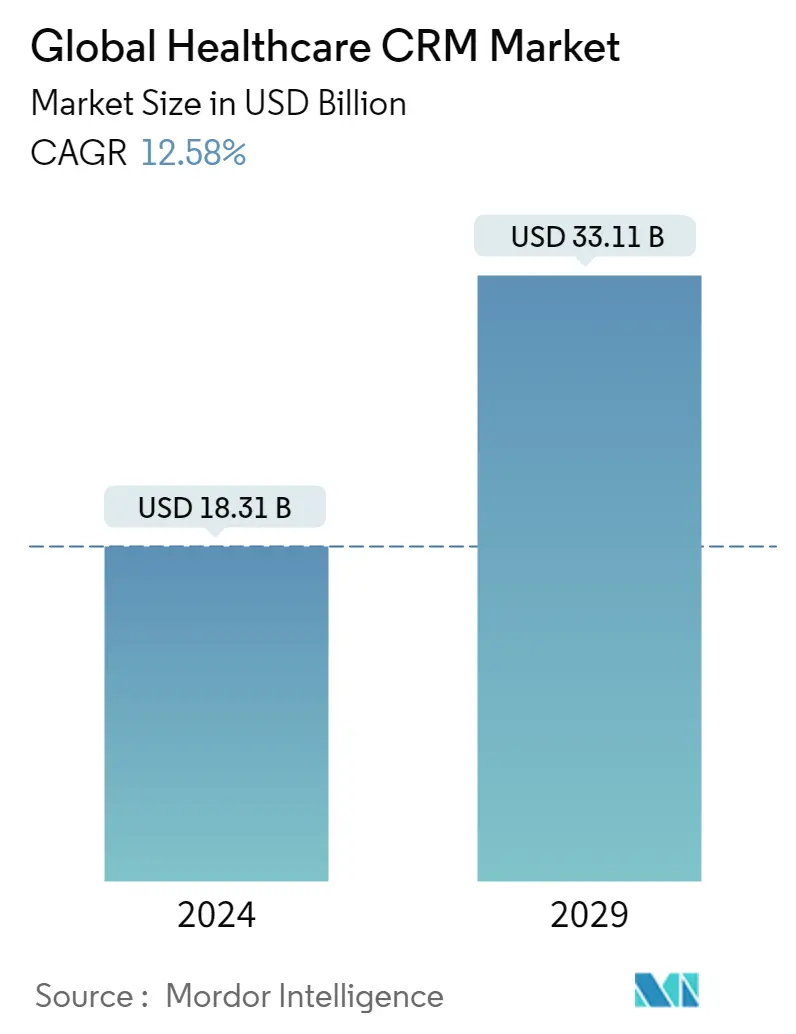
| Study Period | 2019 - 2029 |
| Market Size (2024) | USD 18.31 Billion |
| Market Size (2029) | USD 33.11 Billion |
| CAGR (2024 - 2029) | 12.58 % |
| Fastest Growing Market | Asia-Pacific |
| Largest Market | North America |
Major Players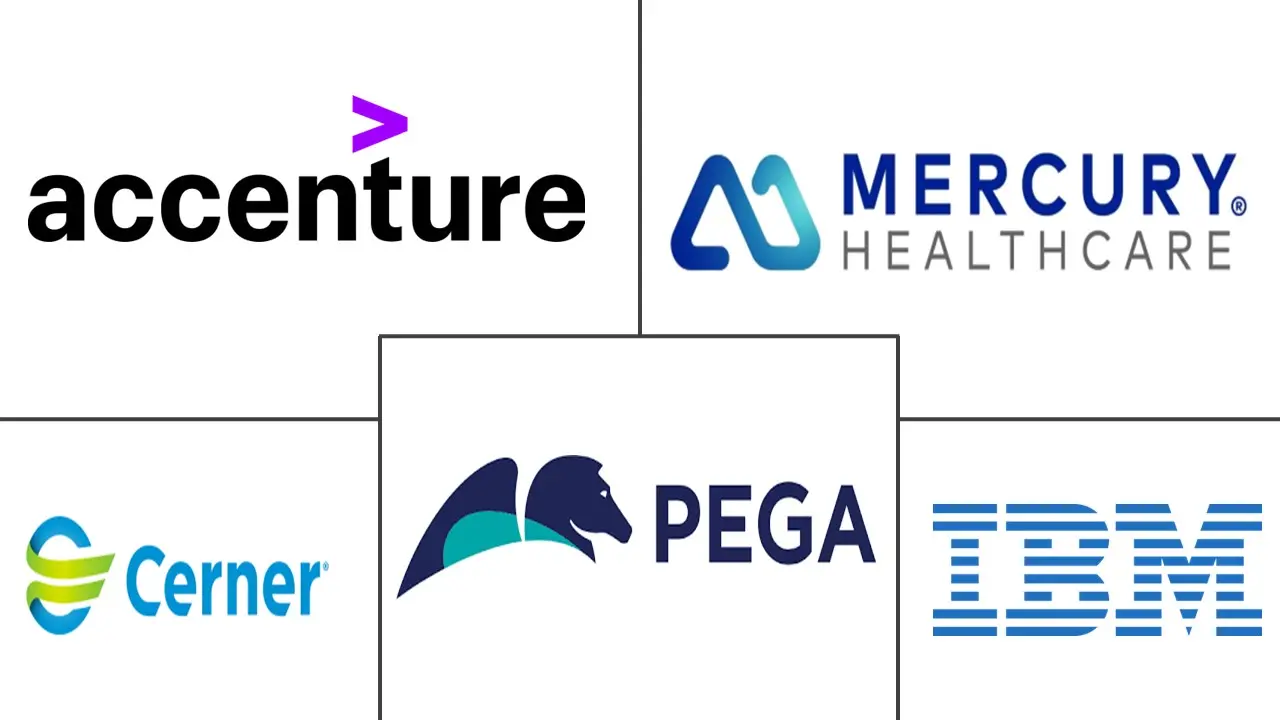
*Disclaimer: Major Players sorted in no particular order |
Healthcare Customer Relationship Management (CRM) Market Analysis
The Global Healthcare CRM Market size is estimated at USD 18.31 billion in 2024, and is expected to reach USD 33.11 billion by 2029, growing at a CAGR of 12.58% during the forecast period (2024-2029).
Covid-19 has significantly impacted the healthcare CRM market and according to the study published in American Health Information Management, titled 'The Impact of COVID-19 on Health Information Management in January 2021, as infringements of individual liberties, public health professionals struggle to give timely and accurate information to the public about realistic expectations on testing and treatment, as well as the politicization of basic health routines. Such an act of providing information to the public might have led to increased adoption of healthcare CRM for maintaining customer relationships, driving the market growth during the pandemic. This has led to developing marketing strategies that consider psychological factors to meet actual consumers' needs and feelings.
The major factors driving the growth of the healthcare CRM market include the growing focus on customer relationship management, rising benefits of CRM software and services, and technological advancements such as the integration of Artificial Intelligence (AI) within CRM tools, among others. According to the study published in Heliyon, titled 'Customer relationship management systems (CRMS) in the healthcare environment: A systematic literature review' in April 2020, CRM has positive outcomes in terms of patient relationship/communication with hospital, satisfaction, medical treatment/outcomes, and empowerment, as well as hospital medical operation, productivity, cost, performance, efficiency, and service quality. Such high benefits of CRM in the healthcare sector will lead to a rise in the adoption of CRM in hospitals, clinics, medical centers, and nursing homes, driving the market growth.
In addition, fundraising by the companies for the development of healthcare CRM software and services will lead to the development of novel CRM products, driving the market growth. For instance, in June 2021, Zus Health closed a USD 34million Series A financing to offer software tools and services for patient relationship management and provider workflow apps, allowing digital health companies to build their own unique experiences and iterate with ease.
Furthermore, rising partnerships in healthcare CRM will also be expected to propel the market growth due to the implementation of strategies and the rise in the adoption of CRM services offered by the companies. For instance, in August 2020, Enquire, one of the leading providers of cloud CRM, marketing automation, and contact center solutions for senior living communities and post-acute care companies, collaborated with Trella Health. Trella's performance intelligence data and insights will be integrated into Enquire's CRM solution as a strong tool for the companies' typical clients as part of their strategic relationship. However, the concerns regarding data security and the high cost and complexity associated with CRM are the factors expected to hinder the market growth.
Healthcare Customer Relationship Management (CRM) Market Trends
This section covers the major market trends shaping the Healthcare CRM Market according to our research experts:
Web/Cloud-Based Deployment Model is Expected to Hold a Major Share in the Market Over the Forecast Period
The web/Cloud-based deployment model is expected to hold a major share in the healthcare CRM model.
To address the difficulties and make its operations data-driven, the healthcare industry requires a cloud-based platform. A healthcare CRM will not only assist an organization's sales staff, but it will also boost transparency in the healthcare industry by integrating patient data with various members to foster confidence and raise patient expectations.
Rising product launches for the web/cloud-based healthcare CRM products/services will lead to rising in the adoption of these products and services due to the increased functionalities, driving the market growth, for instance, in September 2021. Salesforce, one of the leading CRM companies, has unveiled Health Cloud 2.0, a new platform that enables businesses and governments to improve the health and safety of their employees, customers, and communities. The rising safety of web/cloud-based healthcare CRM will further lead to the adoption of web/cloud-based CRM by healthcare organizations, driving this segment growth. For instance, in August 2021, Adobe launched its new experience cloud for healthcare, which includes expanded data unification services and privacy measures. The new service aims to break down data silos, safeguard sensitive information, and interact with Microsoft's Healthcare Cloud and Veeva's CRM. By this, the data connection will enable healthcare providers, insurers, retail pharmacies, and pharmaceutical companies to build and provide customized experiences. Furthermore, the new service is based on Adobe Experience Cloud apps and is intended to assist healthcare organizations in enhancing treatment quality, cutting costs, and accelerating digital transformation. Such initiatives addressing privacy concerns will lead to increased adoption of web/cloud-based healthcare CRM services, driving the market growth. Therefore, owing to the above-mentioned factors, this segment is expected to hold a significant share in the market studied.
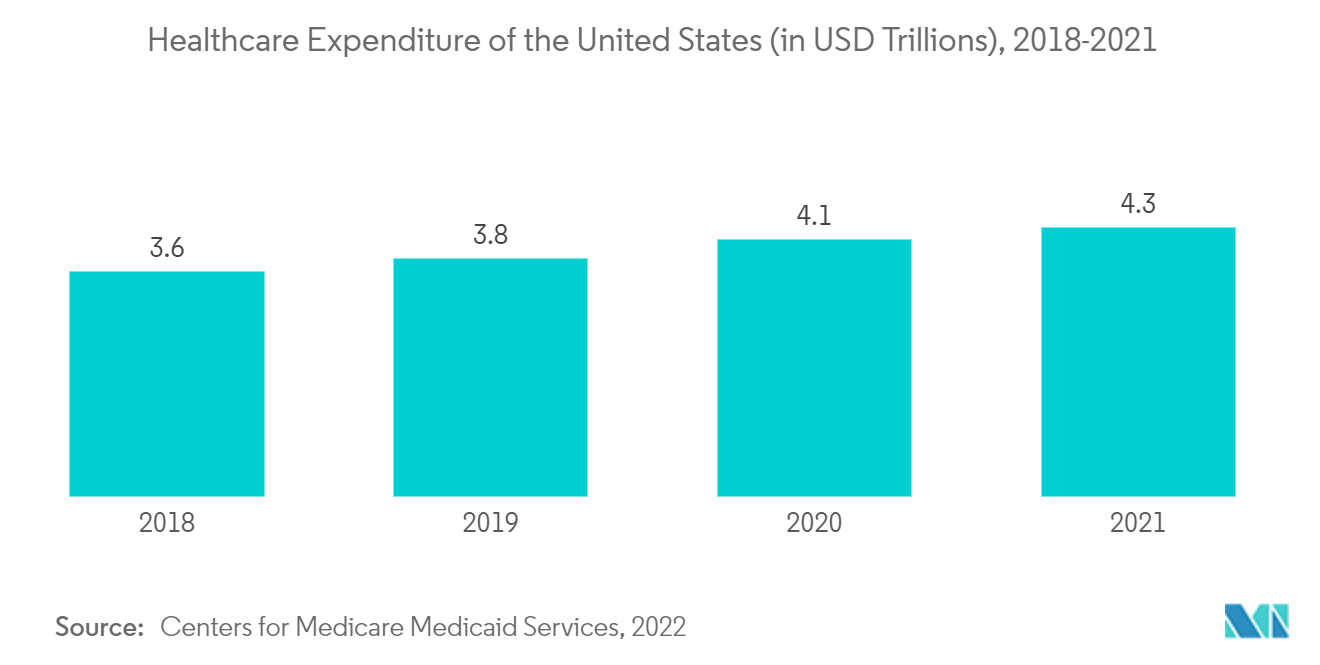
North America Holds a Major Share and Expected to do Same in the Forecast Period
North America holds a major share in the healthcare CRM market, and it is expected to follow the same trend over the forecast period. The factors responsible for the growth of this market in North America include the developed healthcare system, the rise in chronic diseases, sophisticated healthcare infrastructure, and the rise in demand for healthcare CRM, among others.
Rising exhibitions of healthcare CRM products will also lead to increased adoption of such products and services, thereby lead to drive the market growth in North America. For instance, in February 2022. Epic has showcased a new Healthcare CRM system at Healthcare Information and Management Systems Society (HIMSS) 2022. In addition, rising distribution partnerships among the key market players for the distribution of healthcare CRM will lead to rising in the adoption of healthcare CRM in healthcare organizations in the United States. For instance, in June 2021, MicroPort CRM has agreed to sell and distribute Implicity's cloud-based solution in the United States as part of its remote patient monitoring offerings with a new digital service that allows cardiologists and electrophysiologists to seamlessly manage data collected by various cardiac implantable electronic devices (CIEDs).
Furthermore, in March 2022, Invoca launched new Artificial Intelligence (AI) solution for healthcare that can be integrated into their CRM, analytics, media, and digital experience platforms and keep track of patient data at scale. Such technological advancements of AI in healthcare will lead to f incorporation of AI in healthcare CRM in the United States, leading to higher adoption of advanced innovative products, driving the market growth. Therefore, owing to the above-mentioned factors, the market for healthcare CRM is expected to drive swiftly in this region.
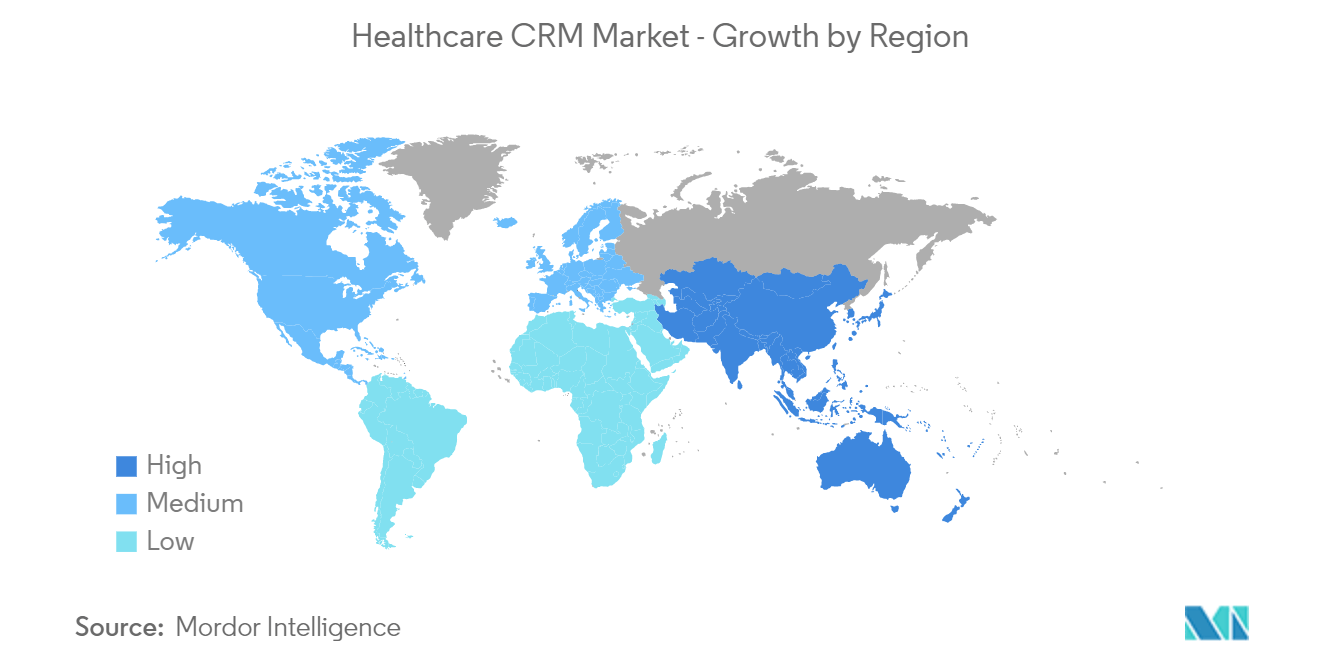
Healthcare Customer Relationship Management (CRM) Industry Overview
The market for healthcare CRM is moderately competitive. The market is expected to drive due to the factors such as the launch of innovative healthcare CRM products, the rise in partnerships to distribute the products, implementation of artificial intelligence in healthcare CRM, among others. Some of the major players in this market include IBM Corporation, Accenture, Mercury Healthcare Inc, Cerner Corporation, Pegasystems Inc, and Salesforce, Inc, among others.
Healthcare Customer Relationship Management (CRM) Market Leaders
-
IBM Corporatoin
-
Accenture
-
Mercury Healthcare, Inc.
-
Cerner Corporation
-
Pegasystems Inc
*Disclaimer: Major Players sorted in no particular order
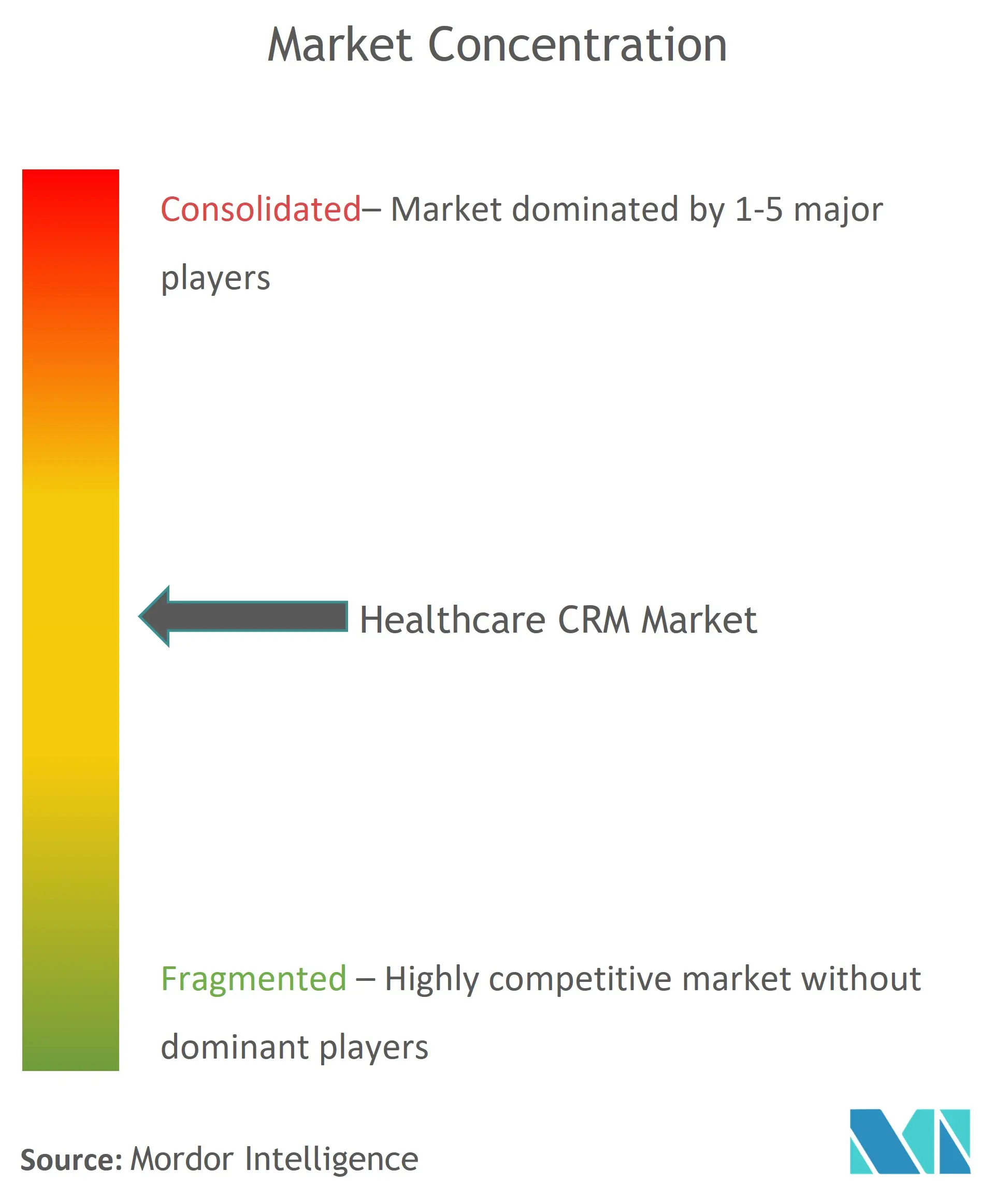
Healthcare Customer Relationship Management (CRM) Market News
- In April 2022, Cured launched the next evolution of its digital marketing and customer relationship management (CRM) platform built for healthcare, further enabling the company to deliver on its mission to bring care full circle.
- In March 2022, Epic launched a customer relationship management system for health systems and is developing an app that uses real-world data to help physicians research best care practices for their patients.
Healthcare Customer Relationship Management (CRM) Market Report - Table of Contents
1. INTRODUCTION
- 1.1 Study Assumptions and Market Definition
- 1.2 Scope of the Study
2. RESEARCH METHODOLOGY
3. EXECUTIVE SUMMARY
4. MARKET DYNAMICS
- 4.1 Market Overview
-
4.2 Market Drivers
- 4.2.1 Growing Focus Towards Customer Relationship Management in Healthcare
- 4.2.2 Benefits of CRM Software
- 4.2.3 Technological Advancements Such as Integration of Artificial Intelligence (AI) within CRM tools
-
4.3 Market Restraints
- 4.3.1 Concerns Regarding Data Security
- 4.3.2 High Cost and Complexity of CRM Implementation
-
4.4 Porter's Five Forces Analysis
- 4.4.1 Threat of New Entrants
- 4.4.2 Bargaining Power of Buyers/Consumers
- 4.4.3 Bargaining Power of Suppliers
- 4.4.4 Threat of Substitute Products
- 4.4.5 Intensity of Competitive Rivalry
5. MARKET SEGMENTATION (Market Size by Value - USD million)
-
5.1 By Deployment Model
- 5.1.1 On-Premise Model
- 5.1.2 Web/Cloud-Based Model
-
5.2 By Application
- 5.2.1 Customer Service and Support
- 5.2.2 Sales and Marketing
- 5.2.3 Community Outreach
- 5.2.4 Patient Information Management
- 5.2.5 Other (Clinical trials relationship management, CRM Analytics, Referrals)
-
5.3 By End User
- 5.3.1 Hospitals
- 5.3.2 Ambulatory Surgery Centers(ASCS) and Clinics
- 5.3.3 Diagnostic Centers
- 5.3.4 Others (Pharmacies, Medical centers, and Nursing Homes)
-
5.4 Geography
- 5.4.1 North America
- 5.4.1.1 United States
- 5.4.1.2 Canada
- 5.4.1.3 Mexico
- 5.4.2 Europe
- 5.4.2.1 Germany
- 5.4.2.2 United Kingdom
- 5.4.2.3 France
- 5.4.2.4 Italy
- 5.4.2.5 Spain
- 5.4.2.6 Rest of Europe
- 5.4.3 Asia-Pacific
- 5.4.3.1 China
- 5.4.3.2 Japan
- 5.4.3.3 India
- 5.4.3.4 Australia
- 5.4.3.5 South Korea
- 5.4.3.6 Rest of Asia-Pacific
- 5.4.4 Middle East and Africa
- 5.4.4.1 GCC
- 5.4.4.2 South Africa
- 5.4.4.3 Rest of Middle East and Africa
- 5.4.5 South America
- 5.4.5.1 Brazil
- 5.4.5.2 Argentina
- 5.4.5.3 Rest of South America
6. COMPETITIVE LANDSCAPE
-
6.1 Company Profiles
- 6.1.1 Salesforce, Inc
- 6.1.2 Oracle
- 6.1.3 Microsoft
- 6.1.4 IBM
- 6.1.5 SAP SE
- 6.1.6 SugarCRM Inc
- 6.1.7 Accenture
- 6.1.8 Mercury Healthcare, Inc.
- 6.1.9 Infor, Inc
- 6.1.10 Pegasystems Inc
- 6.1.11 Sage Group Plc.
- 6.1.12 Cerner Corporation
- *List Not Exhaustive
7. MARKET OPPORTUNITIES AND FUTURE TRENDS
** Subject To AvailablityHealthcare Customer Relationship Management (CRM) Industry Segmentation
As per the scope of this report, Healthcare customer relationship management offers a number of services and solutions that can help healthcare practitioners and patients communicate more effectively through the tools such as text messages, messaging services, web forms, comment forms, and emails, among others. The healthcare CRM market is segmented by component (software, services), deployment model (on-premise model, and web/cloud-based model), application (customer service and support, sales and marketing, community outreach, patient information management, and others), end user (hospitals, ambulatory surgery centers (ASCS) and clinics, diagnostic centers, and others), and geography (North America, Europe, Asia-Pacific, Middle East and Africa, and South America). The market report also covers the estimated market sizes and trends for 17 different countries across major regions globally. The report offers the value (in USD million) for the above segments.
| By Deployment Model | On-Premise Model | |
| Web/Cloud-Based Model | ||
| By Application | Customer Service and Support | |
| Sales and Marketing | ||
| Community Outreach | ||
| Patient Information Management | ||
| Other (Clinical trials relationship management, CRM Analytics, Referrals) | ||
| By End User | Hospitals | |
| Ambulatory Surgery Centers(ASCS) and Clinics | ||
| Diagnostic Centers | ||
| Others (Pharmacies, Medical centers, and Nursing Homes) | ||
| Geography | North America | United States |
| Canada | ||
| Mexico | ||
| Geography | Europe | Germany |
| United Kingdom | ||
| France | ||
| Italy | ||
| Spain | ||
| Rest of Europe | ||
| Geography | Asia-Pacific | China |
| Japan | ||
| India | ||
| Australia | ||
| South Korea | ||
| Rest of Asia-Pacific | ||
| Geography | Middle East and Africa | GCC |
| South Africa | ||
| Rest of Middle East and Africa | ||
| Geography | South America | Brazil |
| Argentina | ||
| Rest of South America |
Healthcare Customer Relationship Management (CRM) Market Research FAQs
How big is the Global Healthcare CRM Market?
The Global Healthcare CRM Market size is expected to reach USD 18.31 billion in 2024 and grow at a CAGR of 12.58% to reach USD 33.11 billion by 2029.
What is the current Global Healthcare CRM Market size?
In 2024, the Global Healthcare CRM Market size is expected to reach USD 18.31 billion.
Who are the key players in Global Healthcare CRM Market?
IBM Corporatoin, Accenture, Mercury Healthcare, Inc., Cerner Corporation and Pegasystems Inc are the major companies operating in the Global Healthcare CRM Market.
Which is the fastest growing region in Global Healthcare CRM Market?
Asia-Pacific is estimated to grow at the highest CAGR over the forecast period (2024-2029).
Which region has the biggest share in Global Healthcare CRM Market?
In 2024, the North America accounts for the largest market share in Global Healthcare CRM Market.
What years does this Global Healthcare CRM Market cover, and what was the market size in 2023?
In 2023, the Global Healthcare CRM Market size was estimated at USD 16.26 billion. The report covers the Global Healthcare CRM Market historical market size for years: 2019, 2020, 2021, 2022 and 2023. The report also forecasts the Global Healthcare CRM Market size for years: 2024, 2025, 2026, 2027, 2028 and 2029.
Healthcare CRM Industry Report
Statistics for the 2024 Healthcare CRM market share, size and revenue growth rate, created by Mordor Intelligence™ Industry Reports. Healthcare CRM analysis includes a market forecast outlook to 2029 and historical overview. Get a sample of this industry analysis as a free report PDF download.



